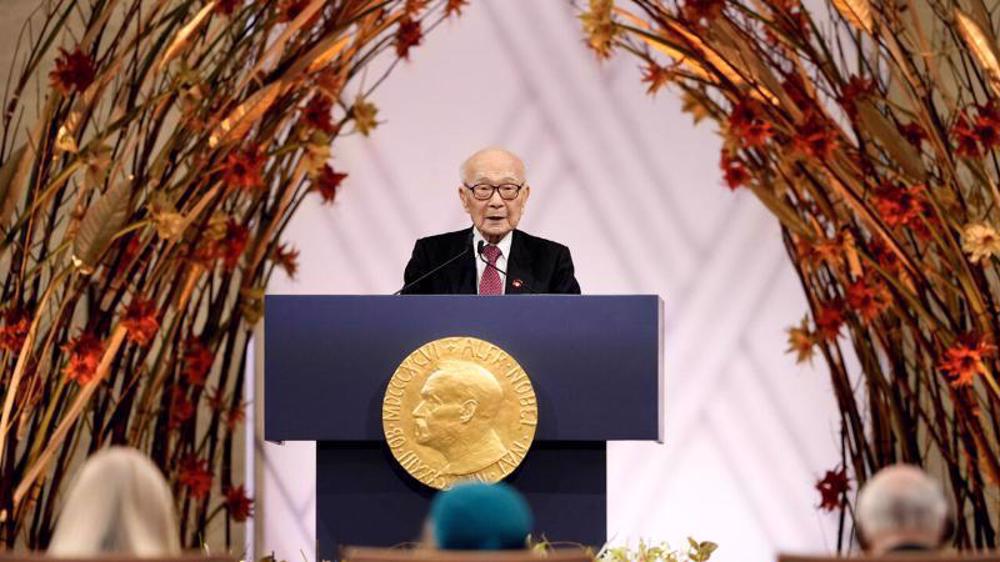Japan requests record-high defense budget amid Korean Peninsula tensions
Japan’s Defense Ministry has requested a record-high budget to boost its missile ranges amid increasing tensions on the Korean Peninsula.
The ministry on Thursday put its spending estimate for the fiscal year beginning next April at a figure of about 5.26 trillion yen ($48 billion), a big chunk of which would go to the purchases of upgraded missile interceptors with expanded range, altitude and accuracy.
The budget, which shows a 2.5-percent increase from the current year, comes two days after North Korea fired a mid-range ballistic missile over Japan, sparking condemnation from Prime Minister Shinzo Abe who called the action an “unprecedented, grave and serious threat.”
The firing, which saw the missile land in the northern Pacific Ocean, came after North Korea tested two intercontinental ballistic missiles in July, effectively showing its capability to target the entire United States.
Japan has been wary of escalated tensions between the US and North Korea as it hosts tens of thousands of American troops on its soil and could be an easy target for North Korea in any future confrontation.
The Thursday request by Japan’s Defense Ministry also comes against the backdrop of Tokyo’s military tensions with Beijing, as the Japanese view China’s increased military activity in regional waters with great suspicions.
Meanwhile, China's Foreign Ministry questioned the rise in Japan’s projected defense budget, saying North Korea’s missile firings were a pretext and Japan should speak about its real intentions.
“We think Japan is obliged to explain its real intention to the international community,” said Hua Chunying, a Foreign Ministry spokeswoman, in Beijing on Thursday.
However, Japan’s Defense Minister Itsunori Onodera, a fierce advocate of bolstering the country’s missile and counter-missile activity, said Tokyo was forced to upgrade its missile arsenal in the face of alleged increasing threats from North Korea.

Details of the budget request announced Thursday showed that Japan was planning to add to its arsenal the ship-to-air SM-3 Block IIA, a system jointly developed by the US which has double the range of its earlier model used on Japanese destroyers and could cost Tokyo about 180 billion yen ($1.6 billion). The anti-missile system will also be accompanied by the surface-to-air PAC-3 MSE.
Japan would also add two compact destroyers to its fleet as part of plans to increase its fleet size to 54 from 48. There were also plans for a new lithium battery-powered submarine with upgraded detection capability and longer operation time and also six F-35 stealth fighters. The three initiatives would consume 254 billion yen ($2.31 billion) from the budget.
There were speculations that Japan would seek to deploy land-based fixed Aegis Ashore missile-defense system while pondering to add the mobile and more costly Terminal High Altitude Area Defense, or THAAD, a system being currently deployed to South Korea. Japanese authorities said they would decide on the two interceptors later this year.
VIDEO | Press TV's news headlines
Israeli strikes on north Gaza hospital ‘extremely dangerous, terrifying’: Director
VIDEO | Yemen targets Tel Aviv with Palestine 2 missiles
Pezeshkian: Iran resolved to complete North-South Transport Corridor
VIDEO | Iran-Syria: For Resistance
Qassam Brigades claims killing 3 Israeli troops in northern Gaza
More alive than ever: Sayyed Hassan Nasrallah's legacy grows stronger in martyrdom
Occupation of Syria’s highest peak Mount Hermon part of ‘Greater Israel’ project













 This makes it easy to access the Press TV website
This makes it easy to access the Press TV website